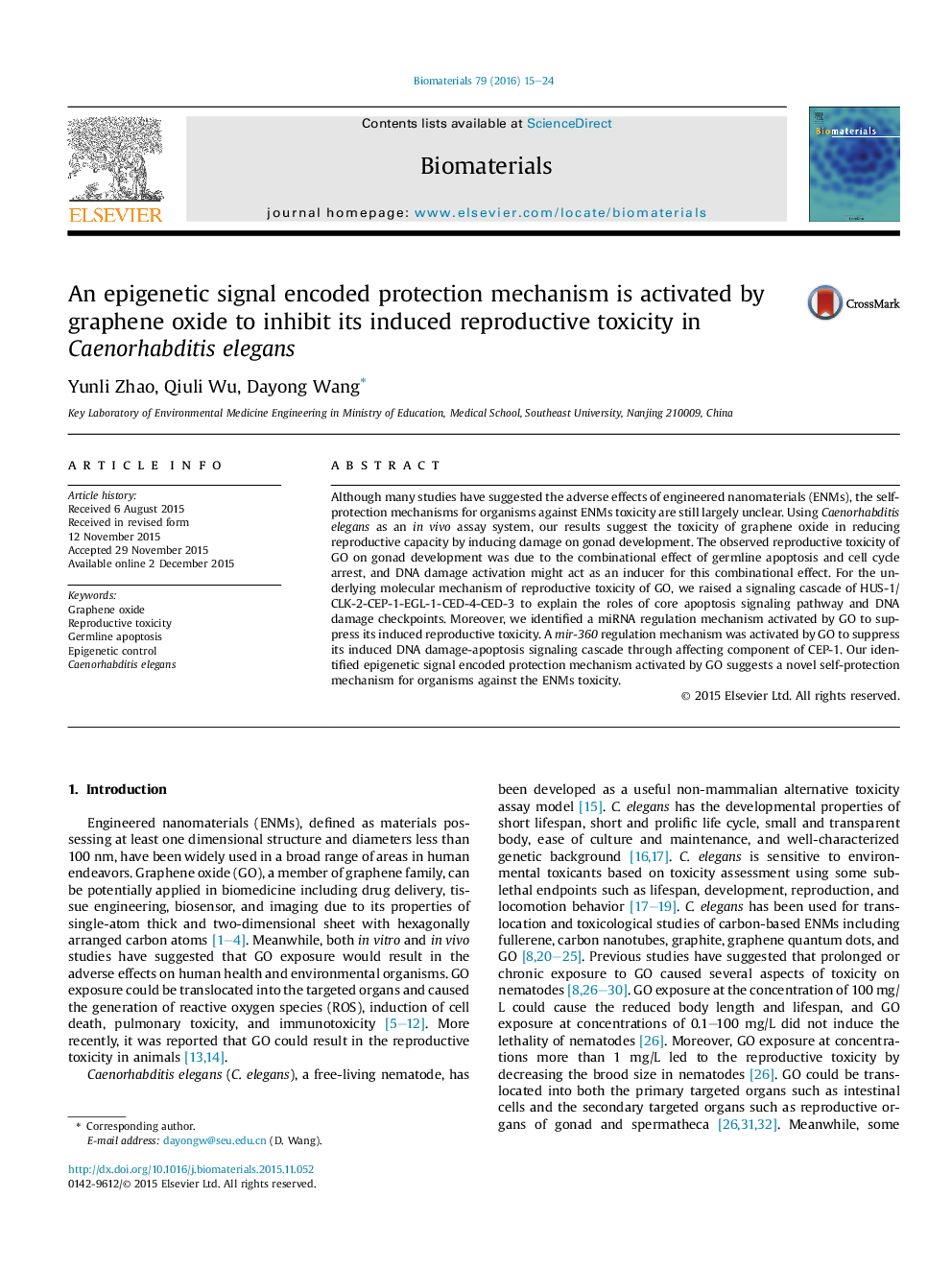| Article ID | Journal | Published Year | Pages | File Type |
|---|---|---|---|---|
| 5474 | Biomaterials | 2016 | 10 Pages |
Although many studies have suggested the adverse effects of engineered nanomaterials (ENMs), the self-protection mechanisms for organisms against ENMs toxicity are still largely unclear. Using Caenorhabditis elegans as an in vivo assay system, our results suggest the toxicity of graphene oxide in reducing reproductive capacity by inducing damage on gonad development. The observed reproductive toxicity of GO on gonad development was due to the combinational effect of germline apoptosis and cell cycle arrest, and DNA damage activation might act as an inducer for this combinational effect. For the underlying molecular mechanism of reproductive toxicity of GO, we raised a signaling cascade of HUS-1/CLK-2-CEP-1-EGL-1-CED-4-CED-3 to explain the roles of core apoptosis signaling pathway and DNA damage checkpoints. Moreover, we identified a miRNA regulation mechanism activated by GO to suppress its induced reproductive toxicity. A mir-360 regulation mechanism was activated by GO to suppress its induced DNA damage-apoptosis signaling cascade through affecting component of CEP-1. Our identified epigenetic signal encoded protection mechanism activated by GO suggests a novel self-protection mechanism for organisms against the ENMs toxicity.
